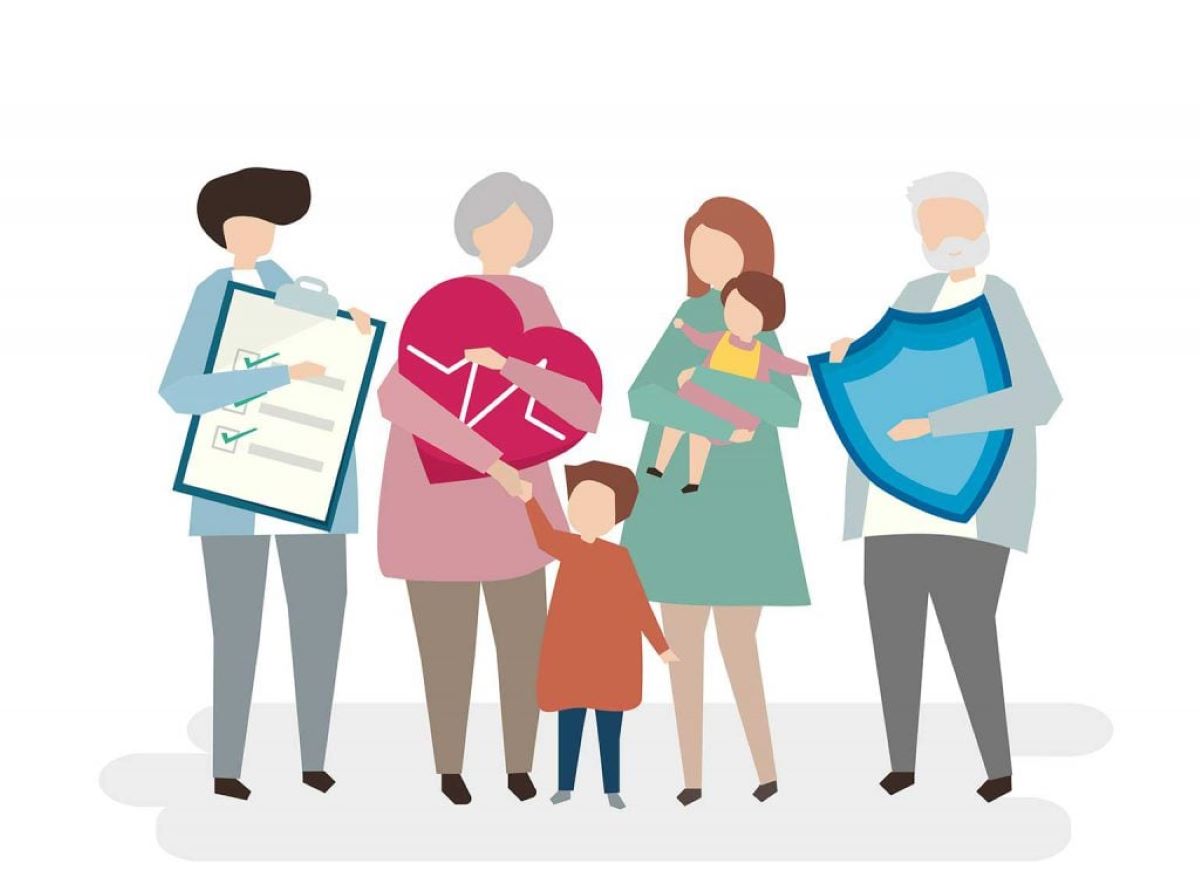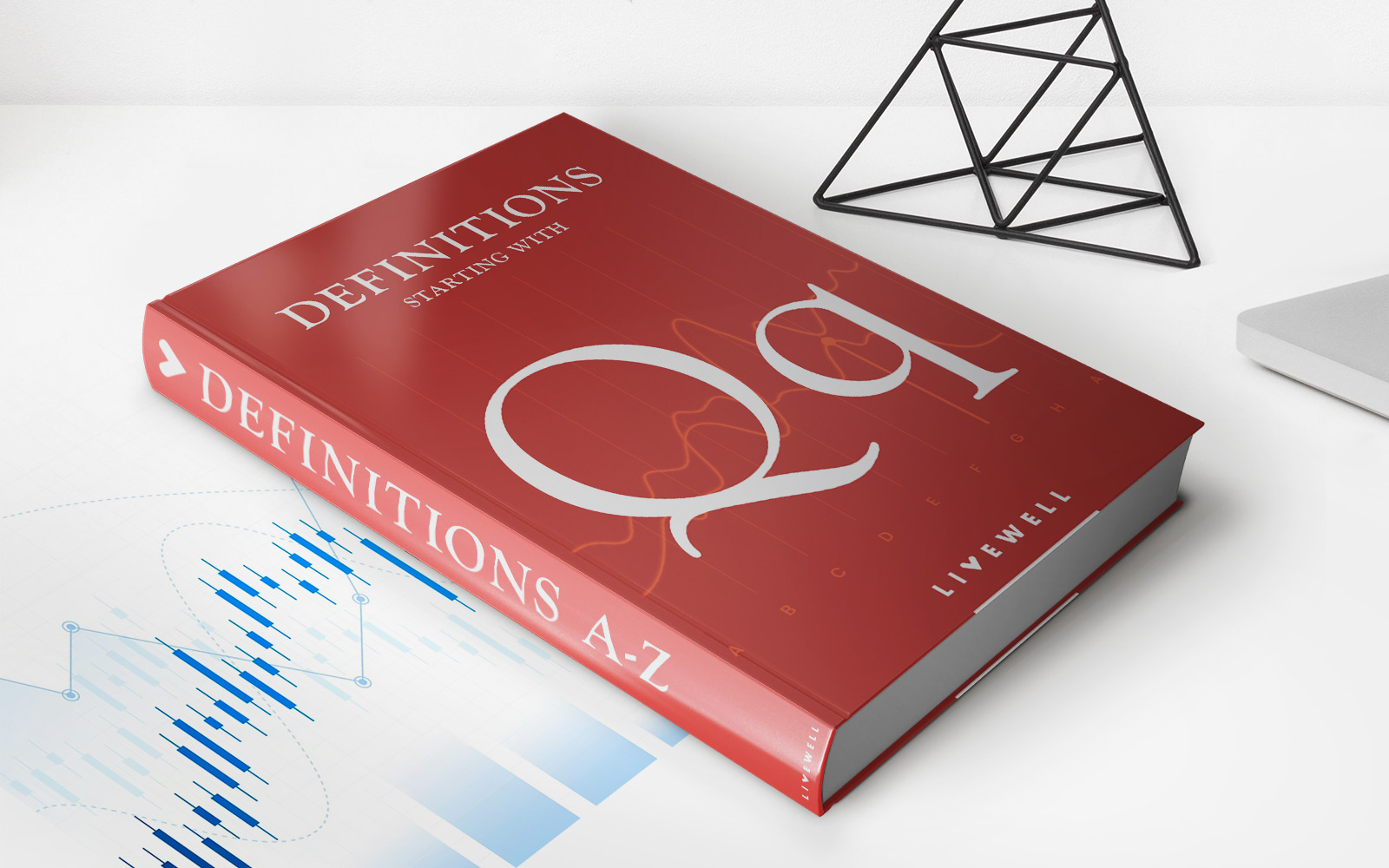

Finance
How Does Debt-Free Life Insurance Work?
Published: October 15, 2023
Discover how debt-free life insurance works and how it can secure your financial future. Enhance your knowledge on finance and make informed decisions.
(Many of the links in this article redirect to a specific reviewed product. Your purchase of these products through affiliate links helps to generate commission for LiveWell, at no extra cost. Learn more)
Table of Contents
Introduction
Debt-free life insurance is a financial tool that offers individuals the opportunity to protect their loved ones financially while ensuring they leave behind no outstanding debts. It is a type of life insurance policy designed specifically to cover debts such as mortgages, loans, and credit card balances. With debt-free life insurance, individuals can have peace of mind knowing that their loved ones will not be burdened with financial obligations in the event of their passing.
This type of life insurance is particularly beneficial for individuals who have significant amounts of debt and want to ensure that their debts are taken care of upon their passing. It provides a safety net for both the policyholder and their beneficiaries, relieving them of the financial stress that can come with unpaid debts.
In this article, we will delve deeper into how debt-free life insurance works, explore the pros and cons of this type of policy, and help you understand if it is the right choice for you. We will also provide tips on how to choose the right debt-free life insurance policy based on your individual needs and financial situation.
Before we dive into the details, it is important to note that debt-free life insurance is not the same as regular life insurance. While traditional life insurance can provide financial protection to beneficiaries, debt-free life insurance specifically focuses on settling outstanding debts.
Now that we have a basic understanding of debt-free life insurance, let’s explore how it works in more detail.
Understanding Debt-Free Life Insurance
Debt-free life insurance, also known as mortgage protection insurance or credit life insurance, is a specialized type of life insurance policy that is specifically designed to cover outstanding debts in the event of the policyholder’s death. It ensures that the policyholder’s loved ones are not burdened with the responsibility of paying off debts such as mortgages, loans, or credit card balances.
Unlike traditional life insurance policies that provide a lump sum payment to beneficiaries upon the policyholder’s death, debt-free life insurance policies allocate the payout directly towards outstanding debts. This ensures that the debts are settled, providing financial security to the family or beneficiaries left behind.
One of the advantages of debt-free life insurance is that it offers a specific solution to a specific problem. It is especially beneficial for individuals who have significant debts and want to ensure that their financial obligations are taken care of, even after they are no longer there to provide for their loved ones.
Debt-free life insurance policies typically have a term that matches the length of the debt they are intended to cover. For example, if you have a 30-year mortgage, you can choose a debt-free life insurance policy with a 30-year term. This ensures that your mortgage will be fully paid off should you pass away within that term.
It is important to understand that debt-free life insurance does not provide a cash payout to beneficiaries. Instead, the insurance company directly pays off the outstanding debts. However, once the debts are settled, any remaining funds can be used by the beneficiaries as they see fit.
Another key aspect of debt-free life insurance is that the premiums are typically lower compared to traditional life insurance policies. This is because the coverage amount decreases over time as the outstanding debts are paid off.
Overall, debt-free life insurance can provide peace of mind to individuals with significant debts, knowing that their loved ones will not be burdened with financial obligations after their passing. However, it is important to carefully consider the cost, coverage, and specific terms of each policy before making a decision.
Now that we have a better understanding of debt-free life insurance, let’s explore how it works in practice.
How Debt-Free Life Insurance Works
Debt-free life insurance works by providing coverage specifically for outstanding debts in the event of the policyholder’s death. Here’s how it typically works:
- Policy Purchase: The individual interested in obtaining debt-free life insurance must first apply for a policy. During the application process, they will need to provide information on their outstanding debts, such as the amount owed, the term of the debts, and the creditors.
- Policy Approval: Once the application is submitted, the insurance company will review the information and assess the risk. Based on the individual’s health, age, and financial situation, the insurance company will determine whether to approve the policy and what premium amount to charge.
- Premium Payment: If the policy is approved, the individual will need to pay regular premiums to keep the coverage active. The premium amount will depend on factors such as the outstanding debt amount, the length of the term, and the individual’s age and health.
- Beneficiary Designation: The policyholder will need to designate a beneficiary who will receive the payout in the event of the policyholder’s death. The beneficiary is typically a spouse, partner, or family member who would be responsible for managing the outstanding debts.
- Death of the Policyholder: If the policyholder passes away during the term of the policy, the insurance company will assess the outstanding debts and allocate the payout directly towards settling those debts. The insurance company will work with the beneficiaries and the creditors to ensure the funds are used to pay off the debts in a timely manner.
- Payout Allocation: Once the debts are settled, any remaining funds from the policy can be used by the beneficiaries as they see fit. It could be used to cover funeral expenses, living expenses, or other financial needs.
It is important to note that debt-free life insurance policies have specific terms and conditions that dictate the payout and coverage. The policy may have exclusions, waiting periods, and limitations, so it’s crucial to review the policy document thoroughly before making a decision.
Additionally, it is essential to keep the policy active by making regular premium payments. If the policy lapses or is canceled, the coverage will no longer be in effect, and the outstanding debts will not be covered.
Now that we understand how debt-free life insurance works, let’s examine the pros and cons of this type of policy.
Pros and Cons of Debt-Free Life Insurance
Like any financial tool, debt-free life insurance has its advantages and disadvantages. Let’s take a closer look at the pros and cons:
Pros:
- Financial Protection: Debt-free life insurance provides financial protection to the policyholder’s loved ones by ensuring that outstanding debts are taken care of. It prevents beneficiaries from being burdened with debt payments and allows them to maintain their financial stability after the policyholder’s passing.
- Customized Coverage: Debt-free life insurance policies can be tailored to match the term and amount of the policyholder’s outstanding debts. This customization ensures that the coverage aligns with the specific financial obligations that need to be addressed.
- Lower Premiums: In general, debt-free life insurance policies have lower premiums compared to traditional life insurance policies. This is because the coverage amount decreases over time as the outstanding debts are paid off. Lower premiums can make it more affordable for individuals with significant debts to obtain the coverage they need.
- Simplicity: Debt-free life insurance simplifies the financial planning process by focusing on one specific aspect: paying off outstanding debts. It provides a clear solution to a particular problem, which can be especially valuable for individuals who want to ensure that their debts are taken care of without complicating their financial affairs.
Cons:
- Limited Use of Payout: The payout from a debt-free life insurance policy is typically allocated towards settling outstanding debts. This means that the beneficiaries have limited flexibility in deciding how to use the funds. They cannot use the payout for other purposes, such as covering living expenses, educational costs, or investments.
- Decreasing Coverage: Debt-free life insurance policies have a decreasing coverage amount as the outstanding debts are paid off over time. While this reduction is intentional and aligns with the purpose of the policy, it may not provide the same level of financial support or protection for beneficiaries compared to a traditional life insurance policy with a fixed coverage amount.
- Exclusions and Limitations: Like any insurance policy, debt-free life insurance has specific terms, exclusions, and limitations that may impact the coverage. It is essential to thoroughly review the policy document and understand the fine print to ensure that the policy meets your needs and expectations.
- Cancellation Risks: If premium payments are not made consistently or the policyholder cancels the policy, the coverage will no longer be in effect. It’s crucial to keep up with premium payments to maintain the coverage and ensure that the outstanding debts will be covered in the event of the policyholder’s death.
Now that we have explored the pros and cons of debt-free life insurance, let’s consider whether this type of insurance is the right choice for you.
Is Debt-Free Life Insurance Right for You?
Deciding whether debt-free life insurance is the right choice for you requires careful consideration of your financial situation, goals, and priorities. Here are some factors to consider when determining if this type of insurance aligns with your needs:
- Level of Outstanding Debts: If you have significant outstanding debts such as a mortgage, loans, or credit card balances, debt-free life insurance can provide valuable protection. It ensures that your loved ones are not burdened with these financial obligations, giving them the necessary funds to pay off the debts and maintain their financial stability.
- Financial Dependents: If you have dependents who rely on your income to cover living expenses and debt payments, debt-free life insurance can be particularly beneficial. It provides a safety net for your loved ones and ensures that they are not left struggling to make ends meet if you were to pass away.
- Peace of Mind: If the thought of leaving outstanding debts behind causes you stress or anxiety, debt-free life insurance can offer peace of mind. Knowing that your financial obligations will be taken care of can provide reassurance and allow you to focus on other aspects of your financial planning.
- Alternative Options: Consider whether there are alternative strategies to address your outstanding debts. For example, if you have a solid emergency fund or other assets that can cover the debts, debt-free life insurance may not be necessary. It’s important to evaluate all available options and choose the one that best aligns with your financial goals.
- Affordability: Assess your budget and determine if you can comfortably afford the premiums associated with debt-free life insurance. While the premiums may be lower than traditional life insurance, it’s still essential to ensure that you can meet the ongoing financial obligation to maintain the coverage.
Ultimately, the decision to pursue debt-free life insurance depends on your unique circumstances and financial goals. It may be beneficial for those with significant debts and dependents who rely on their income. However, it may not be necessary for individuals who have alternative means to cover their debts or have limited financial dependents.
Before making a decision, it is advisable to consult with a financial advisor or insurance professional who can provide personalized guidance based on your specific needs and situation.
Now that we have considered whether debt-free life insurance is right for you, let’s explore tips on how to choose the right policy.
Choosing the Right Debt-Free Life Insurance Policy
When selecting a debt-free life insurance policy, it is important to consider several factors to ensure you choose the right coverage for your needs. Here are some tips to help guide you in the decision-making process:
- Evaluate Your Outstanding Debts: Start by assessing your outstanding debts, including mortgages, loans, and credit card balances. Determine the total amount owed and the length of time remaining on those debts. This information will help you determine the necessary coverage amount and term for your policy.
- Research Different Policies: Take the time to research and compare different debt-free life insurance policies from reputable insurance companies. Read through the policy details, coverage terms, and limitations. Understand how the payout is allocated towards the debts and any remaining funds. Look for policies that offer the flexibility and features that align with your specific needs.
- Consider Your Budget: Determine how much you can comfortably afford to allocate towards premium payments. While debt-free life insurance premiums are typically lower than traditional life insurance, it’s essential to choose a policy that fits within your budget without sacrificing the necessary coverage amount.
- Review the Policy Fine Print: Carefully review the policy documents, terms, and conditions. Ensure you understand any exclusions, waiting periods, or limitations that may impact the coverage. If there are any unclear clauses or questions, don’t hesitate to reach out to the insurance company for clarification.
- Seek Professional Advice: Consider consulting with a financial advisor or insurance professional who specializes in life insurance. They can provide valuable insights and help you navigate the options based on your specific financial situation, goals, and needs. They can also assist you in determining the appropriate coverage amount and term for your policy.
- Read Customer Reviews: Look for customer reviews and ratings of the insurance companies and policies you’re considering. Pay attention to feedback regarding customer service, claim processes, and overall customer satisfaction. This information can help you gauge the quality and reliability of the insurance provider.
- Seek Multiple Quotes: Request quotes from multiple insurers to compare premiums, coverage options, and policy terms. This will allow you to make an informed decision and find the most suitable policy at the best rate available.
By considering these factors and conducting thorough research, you can make an educated decision when choosing a debt-free life insurance policy. Remember, selecting the right policy is essential to ensuring that your outstanding debts are adequately covered, providing financial stability to your loved ones in the future.
Now that we have explored the process of choosing a debt-free life insurance policy, let’s conclude our discussion.
Conclusion
Debt-free life insurance can be a valuable financial tool for individuals who have significant outstanding debts and want to ensure that their loved ones are not burdened with financial obligations in the event of their passing. It provides peace of mind by specifically covering outstanding debts such as mortgages, loans, and credit card balances.
Throughout this article, we have explored how debt-free life insurance works, its pros and cons, and the factors to consider when deciding if it is the right choice for you. We have discussed the importance of evaluating your outstanding debts, researching different policies, considering your budget, and reviewing the policy fine print. Seeking professional advice and reading customer reviews can also be helpful in making an informed decision.
Ultimately, the decision to pursue debt-free life insurance depends on your unique financial situation, goals, and priorities. It is important to carefully consider the benefits and limitations of this type of policy and assess if it aligns with your specific needs.
If you have significant outstanding debts and want to ensure that your loved ones are financially protected in the event of your passing, debt-free life insurance can provide a tailored solution. It offers the assurance that your debts will be taken care of, relieving your family of the burden and allowing them to maintain their financial stability.
Remember, choosing the right debt-free life insurance policy requires thorough research, consideration of your outstanding debts, and an evaluation of your financial circumstances. Consulting with a financial advisor or insurance professional can provide valuable guidance in making the best decision for you.
Now that you understand the basics of debt-free life insurance, it’s time to take the next steps in securing your financial future and protecting your loved ones from the burden of debt.














